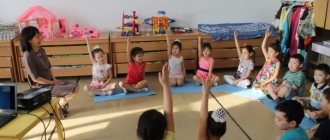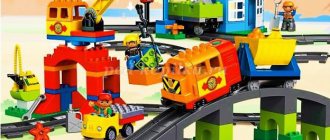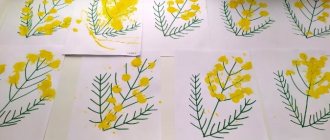Methodological recommendations “Content of corners of experimental activities in preschool educational institutions”
Guidelines
“Content of corners of experimental activities in preschool educational institutions”
In the experimental activity corner (mini-laboratory, science center) the following should be highlighted:
1) a place for a permanent exhibition, which houses a museum, various collections, exhibits, rare objects (shells, stones, crystals, feathers, etc.)
2) a place for instruments, a place for storing materials (natural, “waste”)
3) place for conducting experiments
4) place for unstructured materials (sand, water, sawdust, shavings, polystyrene foam, etc.)
Materials in this zone are distributed in the following areas:
- "Sand and Water"
- "Sound",
- "Magnets"
- "Paper",
- "Light",
- "Glass and plastic"
- "Rubber".
When setting up an experimentation corner, the following requirements must be taken into account:
- safety for the life and health of children;
- adequacy;
- accessibility of location
Yogurt cups, ice cream cups, and plastic bottles are used as laboratory glassware. Children are clearly shown the possibility of recycling materials that are thrown away in excess and pollute the environment. This is a very important educational moment. It is important that everything is signed or diagrams are drawn - designations. You can use various jars with lids and kinder surprises.
To organize independent children's activities, cards-schemes for conducting experiments can be developed. Together with the children, symbols, permitting and prohibiting signs are developed. The material for conducting experiments in the experimentation corner changes in accordance with the work plan
In the experimental activity corner the following should be highlighted:
- Didactic component
- Equipment component
- Stimulating component
- Educational books for middle age;
- Thematic albums;
- Collections: seeds of various plants, pine cones, pebbles, collections “Gifts” (winter, spring, autumn), “Fabrics”, “Paper”, “Buttons”
- Mini-museum (various themes, for example “stones”, miracles of glass”, etc.)
- Sand, clay;
- A set of rubber and plastic toys for playing in water;
- Materials for playing with soap foam,
- Dyes - food and non-food (gouache, watercolors, etc.).
- Seeds of beans, beans, peas
- Some foods (sugar, salt, starch, flour)
- The simplest instruments and devices:
- Magnifying glasses, water vessels, a “box of sensations” (a wonderful bag), a mirror for playing with a “sunny bunny”, containers from “Kinder surprises” with holes, substances and herbs with different smells are placed inside.
- “Waste material”: ropes, laces, braid, wooden spools, clothespins, corks
- Rules for working with materials accessible to children are posted in a prominent place.
- Characters with certain traits - (approx. “Dunno”, “Why”, etc.) on whose behalf a problematic situation is modeled.
- Cards-diagrams of experiments (filled out by the teacher): the date is set, the experiment is sketched.
Contents of experimentation corners
Early and younger ages
Contents of components and equipment of the corner
1. Comparison of objects: objects for comparison by size (large-small, higher-lower, wider-narrower, sensory standards, pyramids, inserts.
2. A table with containers for water and sand, aprons, boats, molds, scoops, sieves for sand, transparent water containers of various shapes, cocktail tubes, sticks, funnels.
3. Dry pools, a tray for drawing with semolina and sand.
4. Natural material: clay, pebbles, shells, pieces of wood, cones, fruits, moss, feathers, etc.
5. Seasonal materials, calendars, layouts.
6. Card indexes with descriptions of experiments
Average age
1. A table for experiments with containers for water and sand, aprons, boats, molds, scoops, sieves for sand, transparent water containers of various shapes, cocktail tubes, sticks, funnels, measuring cups, scales, a brush and a dustpan for sweeping.
3. Dry pools, a tray for drawing with semolina and sand.
4. Indoor plants with signs, plant passports and items for caring for them
5. Natural materials: clay, pebbles, shells, pieces of wood, pine cones, fruits, moss, feathers, bulk products (sugar, salt, food coloring, soap)
6. Seasonal materials, calendars, layouts.
7. Magnifying glass, mirrors, transparent containers for observing insects, objects made of different materials, types of paper
8. Card indexes with descriptions of experiments
9. Journal of experiments for sketching the results.
10. Didactic games on ecology.
11. Operational maps of experiments, preparation of simple dishes.
Older age
- Schemes, tables, models with algorithms for performing experiments;
- Series of paintings depicting natural communities;
- Educational books, atlases;
- Thematic albums;
- Collections
- Mini-museum (themes vary, for example, “There are different types of watches,” “Stone products.”
- sieve, funnels
- Halves of soap dishes, ice trays;
- Oilcloth aprons, sleeves, rubber gloves, rags;
- Mini-stand “What I want to know about tomorrow”;
- Personal notebooks for children to record the results of experiments;
- Hint cards (permitting - prohibiting signs) “What is possible, what is not”;
- Characters endowed with certain traits, on whose behalf a problematic situation is modeled.
- Materials in this zone are distributed in the following areas: “Sand and water”, “Sound”, “Magnets”, “Paper”, “Light”, “Glass and plastic”.
The main equipment in the corner are:
- Helper devices: magnifying glasses, scales, hourglasses, compass, magnets;
- A variety of vessels from various materials (plastic, glass, metal, ceramics);
- Natural material: pebbles, clay, sand, shells, cones, feathers, moss, leaves, etc.;
- Recycled material: wire, pieces of leather, fur, fabric, plastic, cork, etc.;
- Technical materials: nuts, paper clips, bolts, nails, etc.;
- Different types of paper: plain, cardboard, sandpaper, copy paper, etc.;
- Dyes: food and non-food (gouache, watercolors, etc.);
- Medical materials: pipettes, flasks, wooden sticks, syringes (without needles), measuring spoons, rubber bulbs, etc.;
- Other materials: mirrors, balloons, butter, flour, salt, sugar, colored and transparent



